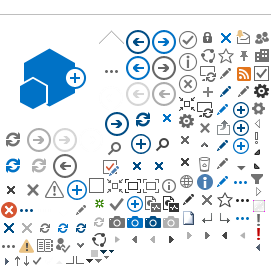I’m a postdoctoral fellow (aka postdoc) here at ELLICSR.
“What is a postdoctoral fellow?” you may ask. Some people joke that we’re the “middlemen of academia”. But really, we are academics with a PhD seeking further training in our chosen field of research. After completing my PhD, I was lucky to be awarded a fellowship from the
Canadian Breast Cancer Foundation – Ontario Region to support my work with ELLICSR.
I’m a pain researcher. I’m excited to tell you about what I do, especially since the beginning of November marked
National Pain Awareness Week.
Before I came to ELLICSR, as one part of my PhD, I worked on a
study assessing pain in women after breast cancer surgery. We were finding that some women experienced pain long after their cancer had been treated. Some of these women would say that they were having a hard time finding professional help to manage their pain. They never expected that the pain would last so long after surgery and they were scared it would never get better. This lasting pain had a huge impact on their quality of life and their ability to get back to life after treatment.
Right now, not a lot is known about pain and how to manage it well in the post-treatment survivorship period. After my PhD, I came to ELLICSR to do a postdoc, to try to help to improve our understanding of pain after treatment and figure out ways to better manage pain that some cancer survivors experience after treatment.
One of my major research studies looks at pain and its management in the first year after treatment for breast cancer. It’s been estimated that as many as half of women may experience chronic pain after surgery1. Most of what we know about post-treatment pain comes from studies about pain after surgery. Less is known about pain caused by other treatments such as chemotherapy, radiation, and hormone treatments2. We also know very little about women’s experiences with pain management in that first year, like whether they’re able to get adequate pain relief or if there are ways to optimize pain management. To answer these questions, we’re asking women who are finishing breast cancer treatment to complete questionnaires about pain, including how much it hurts and what it feels like, as well as questions about pain management, and physical and psychological wellbeing, over the first year after treatment for breast cancer. Some of these women will also participate in a one-on-one interview to describe their experiences of pain and its management in their own words.
Pain related to cancer treatment is a very new field of study. Right now, there are more questions than answers. Plenty of important avenues of investigation remain. For example, why do two people who have very similar cancers or treatment have vastly different pain experiences? We know that there isn’t a direct relationship between injury and our final experience of pain3. Pain is really a ‘biopsychosocial experience’ which means that the final experience is made up of complex interactions between a number of different things, such as biological and physiological factors, our prior history, mood, social context, and the meaning of the pain4. But we know very little about how these factors interact to influence people’s experience of pain related to cancer treatments. If we can begin to understand this, we might be able to determine the best way and time to intervene to help to prevent the development of chronic treatment-related pain. It would also help us to improve quality of life along the treatment continuum and after treatment has completed.
Dr. Gauthier is supported by a Postdoctoral Fellowship Award from the
Canadian Breast Cancer Foundation – Ontario Region. The study has been approved by the UHN Research Ethics Board.
References:
1 Jung BF, Ahrendt GM, Oaklander AL, Dworkin RH. Neuropathic pain following breast cancer surgery: proposed classification and research update. Pain 2003 Jul;104(1-2):1-13.
2 Paice JA. Chronic treatment-related pain in cancer survivors. Pain 2011 Mar;152(3 Suppl):S84-9.
3 Turk DC. Remember the distinction between malignant and benign pain? Well, forget it. Clin J Pain 2002 18(2): 75-76.
4 Gatchel RJ, Peng YB, Peters ML, Fuchs PN, & Turk DC. The biopsychosocial approach to chronic pain: Scientific advances and future directions. Psychological Bulletin 2007 133(4): 581-624.
